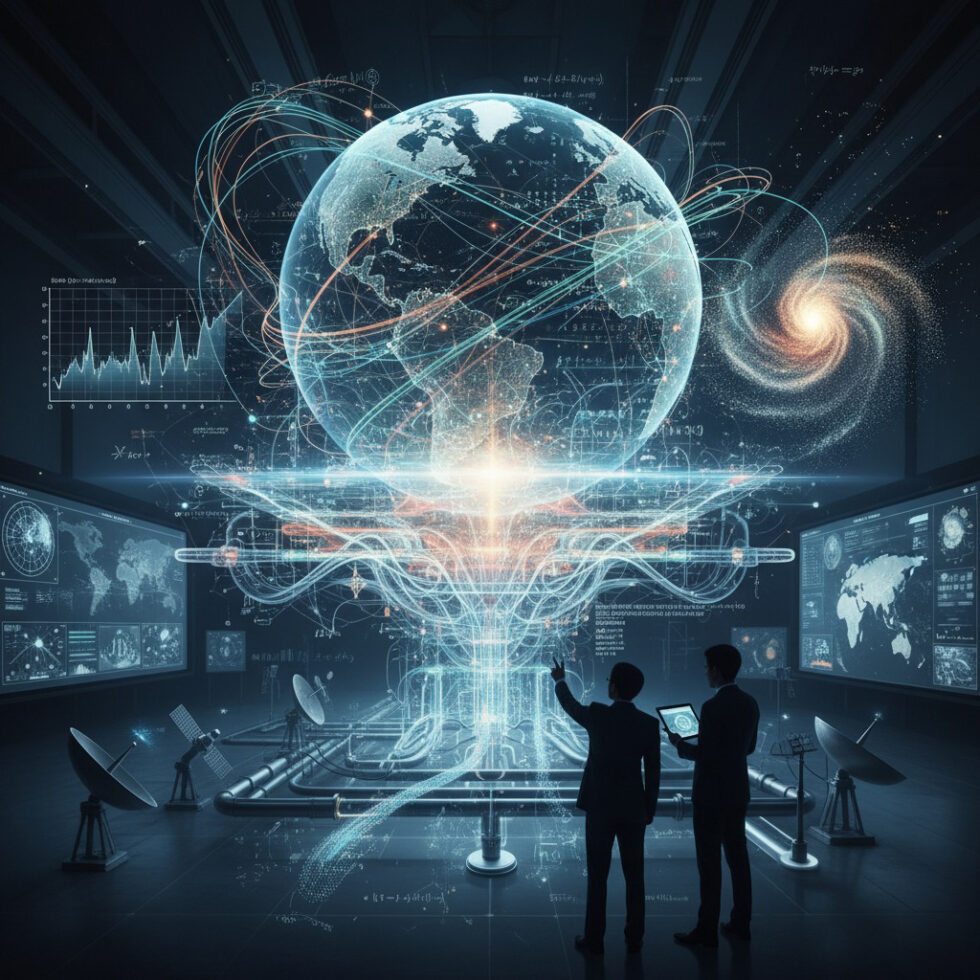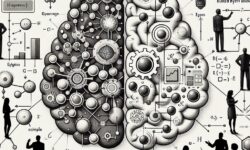
Why weather feels smarter lately
The daily forecast has always been a mix of physics, statistics, and patience. For decades, supercomputers crunched equations that describe how air and moisture move, producing global predictions that were skillful but costly to compute. Today, a new generation of AI weather models is entering the scene. These systems don’t replace physics; they augment it. They learn patterns from vast archives of Earth observations and use those patterns to predict the future faster and, in some cases, more accurately than traditional methods at certain timescales.
Recent AI models are particularly strong at two jobs: short-term local nowcasting (minutes to hours) and medium-range global forecasting (days). They turn satellite images, radar scans, and reanalysis datasets into clean, quick forecasts—sometimes in seconds. This speed opens the door to frequent updates, personalized alerts, and fine-grained guidance for energy, logistics, agriculture, and public safety.
Underneath the headlines are three ideas worth understanding. First, AI can learn the atmosphere’s rhythms from historical data, not just from equations. Second, graph neural networks, transformers, and diffusion models each bring tools that fit different parts of the weather puzzle. Third, better data pipelines—things like reanalysis, radar quality control, and super-resolution—are turning messy raw measurements into model-ready fuel.
From physics-only to physics-plus
Traditional numerical weather prediction (NWP) starts with the laws of fluid dynamics and thermodynamics. It works brilliantly, especially for global structure like jet streams and pressure systems. But NWP is expensive, and errors creep in from imperfect initial conditions, incomplete measurements, and model approximations. That’s why weather centers run ensembles—many model variants—to estimate uncertainty.
AI enters as an accelerator and a pattern detector. It learns mappings from “state now” to “state later” using past examples. Because it’s amortized over training, the model can run very fast at inference—turning today’s data into tomorrow’s prediction without re-solving the full set of physical equations every time. The trick is that this mapping must generalize: storms are unique, seasons vary, and climate change shifts baselines. So the most promising systems combine physics and AI in complementary ways:
- Direct emulators: AI predicts future atmospheric fields (like temperature and wind) from prior fields. These are fast and often competitive at many lead times.
- Hybrid forecasters: AI fills gaps in physics models, such as parameterizing small-scale processes or correcting biases after a physics run.
- Downscalers and super-resolution: AI refines coarse forecasts into sharp, local information aligned with terrain and land use.
- Nowcasters: AI predicts precipitation and storm movement from rapid radar scans, especially helpful in the 0–6 hour window.
None of this removes the need for physics. We still rely on the equations to understand cause and effect, test hypothetical scenarios, and project decades ahead. But for the next few hours or days—timeframes where real-world decisions can change outcomes—AI has become a powerful teammate.
The new toolset: graphs, transformers, and diffusion
AI weather forecasting isn’t a single algorithm. It’s a toolbox. Three families of models stand out because they handle space, time, and uncertainty in ways that look surprisingly like atmospheric behavior.
Graph neural networks: a better map of the Earth
Weather wraps around a sphere, not a flat grid. Traditional grids struggle at the poles and end up wasting compute on areas that don’t need it. Graph neural networks (GNNs) offer an elegant fix. They represent the planet as nodes and edges—think of it as a mesh that adapts to the globe’s shape and the atmosphere’s flow. Information passes along edges, capturing how air parcels exchange energy and moisture.
Modern GNN forecasters process global states as a single graph, letting them propagate signals across long distances. That helps with large-scale features like Rossby waves that steer weather over continents. These models are impressively data-efficient because they reuse the same local interaction pattern everywhere on the sphere. They also allow variable resolution—higher density where detail matters, like coastlines or mountains—without stitching together awkward grids.
When graphs shine
- Global consistency: Forecast fields line up naturally across the whole sphere.
- Efficient learning: Shared message-passing rules generalize across latitudes.
- Smooth multi-step forecasts: Rolling forward in time is stable when long-range interactions are captured explicitly.
Transformers: reading the atmosphere like a language
The atmosphere has grammar: fronts, troughs, and jets combine in recurring patterns. Transformers, the same architecture behind large language models, are adept at detecting patterns across long sequences. In weather, they can attend to signals across space and time, linking a disturbance over the Pacific to a change over North America days later.
Transformers handle multi-channel inputs—winds, humidity, temperature—by treating each as tokens in a structured sequence. With attention mechanisms, they learn which signals matter most for a specific forecast target. They are especially good at medium-range predictions where you need to keep track of many moving parts.
When transformers shine
- Multi-variable fusion: They blend satellite, reanalysis, and model fields into a coherent picture.
- Long-horizon dependencies: Attention reaches across days, even weeks, in a single pass.
- Flexible outputs: The same backbone can predict temperatures, winds, or a probability of rain event.
Diffusion and generative models: capturing uncertainty and fine detail
Weather forecasts are not single answers; they’re probability distributions. Diffusion models—a class of generative AI—are built to sample from distributions. They start with noise and iteratively “denoise” toward realistic outcomes. In meteorology, this is useful for two reasons. First, it creates ensembles cheaply: you can produce many plausible futures from one model. Second, diffusion helps with super-resolution, sharpening coarse output into detailed local patterns like convective cells.
Generative nowcasting models are already popular with radar data. They look at the last few radar frames and generate the next hour or two at high frequency. Because they produce realistic textures and motion, they often beat classic optical-flow methods at predicting where rain will actually fall—crucial for urban floods and outdoor events.
When diffusion shines
- Storm-scale detail: Fine structures emerge in rainfall and cloud fields.
- Probabilistic forecasts: Sampling captures the range of outcomes for risk-aware decisions.
- Fast post-processing: Turn a global forecast into street-level guidance without running a full, high-resolution physics model.
Data is the invisible engine
AI models are only as good as their training data. In weather, that means three pillars: reanalysis datasets, rapid radar/satellite streams, and careful quality control.
Reanalysis: stitched-together memory of the atmosphere
Reanalysis blends historical observations with physics models to reconstruct the atmosphere uniformly across decades. Datasets like ERA5 supply global fields every hour, at many pressure levels, back to the mid-20th century. For AI, this is gold: consistent labels that cover seasons, extremes, and long-term shifts. It’s the bridge between sparse observations and a full 3D picture of the atmosphere.
Training on reanalysis lets AI learn how large-scale features evolve. It also teaches seasonal context—monsoons, storm tracks, and teleconnections. When paired with topography, sea-surface temperatures, and land cover, models pick up how the surface shapes the sky.
Radar and satellite: the heartbeat of nowcasting
For the next hour or two, nothing beats radar. It tracks precipitation directly and updates every few minutes. AI nowcasters use recent radar frames as a moving window and predict the next steps. Satellites augment this with cloud and moisture fields over oceans and remote areas, where radar is scarce.
The challenge is noise: ground clutter, wind turbine artifacts, mountains, and calibration differences between radars. Preprocessing steps—clutter removal, beam blockage correction, and cross-radar harmonization—often decide whether a model learns real atmospheric motion or junk. The better the cleaning, the better the nowcast.
Quality control and curation
Missing values, sensor drift, and inconsistent formats can sink model performance. Forecast teams invest heavily in data pipelines: checking station metadata, aligning time zones, de-biasing satellite retrievals, and flagging oddities. This is not glamorous work, but it’s what turns data into signal.
One more point: evaluation data must be independent. It’s tempting to test on the same years used in training. That inflates confidence. Smart pipelines reserve periods with unusual events—heat domes, atmospheric rivers, sudden stratospheric warmings—to see how models cope under stress.
Accuracy, uncertainty, and trust
Weather users care about two questions: “How likely is it?” and “How bad could it be?” AI models answer both by producing not just a best guess but a distribution over outcomes. Even simple tricks—like generating many runs with different noise seeds—yield useful ensembles that mirror uncertainty.
Calibration matters. A model is calibrated if its probabilities match reality over time. If it says “40% chance of rain” on 100 days, it should rain about 40 of those days. Tools like isotonic regression and temperature scaling can adjust raw outputs so that the numbers mean what they say.
Comparing models fairly requires clear metrics. For continuous fields like temperature, root-mean-square error and anomaly correlation are common. For rain, scores like the critical success index and Brier score emphasize hits, misses, and false alarms. Most groups benchmark AI against strong baselines: persistence, optical flow, and top-tier physics models. When AI wins across seasons, lead times, and regions, users start to trust it—especially if forecasts can be explained with maps that highlight the drivers of a prediction.
Real-world payoffs: where AI forecasts help today
Forecasts are only valuable if they change decisions. The most exciting part of AI weather is how it is quietly improving everyday choices across sectors.
Energy and grids
Wind and solar depend on the sky. AI that sharpens cloud and wind forecasts helps grid operators balance supply and demand minute by minute. When ramps are predicted accurately, fewer backup generators need to be on standby. That cuts costs and carbon. Super-resolution downscaling can translate broad cloud cover into rooftop-level irradiance estimates for solar forecasting.
Floods and urban drainage
City drains are sized for specific rainfall rates. A 20-minute burst can overwhelm them even if the daily total looks modest. AI nowcasting pinpoints those bursts and steers crews to priority hot spots. When combined with hydrologic models, these nowcasts inform street-level warnings that help drivers and cyclists avoid flooded underpasses.
Aviation and logistics
Storms and icing disrupt schedules. Faster and more frequent updates help dispatchers reroute flights earlier, freeing gates and crews. Cargo fleets adjust departure times to dodge microbursts or refuel efficiently amid headwinds. These optimizations compound into fewer delays and lower fuel burn.
Public health and heat
Heat waves strain emergency rooms. Fine-grained temperature and humidity forecasts feed into heat index and wet-bulb calculations, guiding opening hours for cooling centers and shift schedules for outdoor workers. Air quality models benefit from AI too, translating weather patterns and fire activity into particulate forecasts that help people with asthma plan their day.
Agriculture and food
Farmers time irrigation and spraying around wind and rain. Forecasts that represent field-scale variability cut wasted water and reduce chemical drift. In regions with monsoon dynamics, better onset and break predictions protect harvests and logistics. High-frequency updates also help greenhouse operations maintain stable growing conditions with less energy.
Practical design choices in AI weather
Turning algorithms into reliable services requires practical decisions about inputs, outputs, and deployment. A few patterns have emerged as sensible defaults.
- Multi-source inputs: Blend reanalysis, satellite, radar, and topography to give the model both context and detail.
- Rolling forecasts: Instead of a single 10-day jump, predict in steps (e.g., 6-hour increments). This keeps stability and lets users update as new data arrives.
- Ensemble sampling: Use noise, dropout, or latent perturbations to generate multiple plausible outcomes and summarize them as probabilities.
- Post-processing: Calibrate outputs against recent observations to remove bias and align with local quirks, such as urban heat islands.
- Human-in-the-loop: Forecasters review and adjust AI outputs, especially for high-stakes events. Their expertise catches rare failure modes and communicates risk well.
Limits and responsible use
AI weather is excellent at interpolation—filling in patterns similar to those it has seen before. It is less certain when the atmosphere does something rare or when the baseline climate shifts faster than the training data reflects. Here are the main challenges and how teams address them.
Extremes and tail risks
Extreme events are, by definition, underrepresented in training data. If a model has seen only a handful of historic heat domes or record-breaking floods, its instincts may be too cautious. Ensemble sampling helps, but explicit training on synthetic extremes or targeted augmentation near thresholds can improve tail awareness. Pairing AI with physics-based ensembles also provides a backstop.
Domain shift and climate trends
As oceans warm and circulation patterns drift, yesterday’s relationships may weaken. Updating models frequently, emphasizing the most recent years, and incorporating climate trend indicators can keep them aligned. Some groups train models to predict anomalies—deviations from a moving average—so changing baselines are naturally handled.
Compute and energy
Training large models uses energy. Teams mitigate this by using efficient architectures, mixed-precision training, and data centers powered by low-carbon electricity. The payoff is that inference is cheap and replaces many physics runs, so the lifetime footprint can be favorable—especially when better forecasts reduce waste in energy and transport systems.
Transparency and communication
Numbers alone don’t persuade. Maps that highlight the drivers of a forecast—temperature advection, moisture flux, or vorticity—help users trust the output. So do consistent verification reports that reveal where and when the model struggles. The goal is not to hide uncertainty but to make it actionable: “60% chance of 20–40 mm in this district between 5–8 pm” is far more useful than “rain likely.”
How to read an AI forecast like a pro
As more apps surface AI-driven guidance, it helps to know what to look for:
- Lead time vs. resolution: If you need detail at the street level, trust shorter lead times. The farther out you go, the blurrier the picture.
- Probabilities, not certainties: Ask for ranges or percentiles. A single number hides risk.
- Update cadence: Check when the forecast was last refreshed. Rapidly evolving storms need frequent updates.
- Local context: Terrain, land use, and urban features matter. Models that account for them perform better nearby.
- Consistency across runs: If multiple updates disagree wildly, that’s a sign to be cautious and plan for contingencies.
Getting started: open tools and datasets
You don’t need a supercomputer to explore AI weather. Much of the ecosystem is open, and cloud platforms host petabytes of data with free egress tiers for research. Here are practical starting points:
- Global reanalysis: Public datasets like ERA5 provide hourly fields from the surface to the stratosphere. They’re ideal for training medium-range models and for evaluating local post-processing.
- Radar and satellite: National agencies publish near-real-time radar mosaics and satellite imagery. These power nowcasting experiments and precipitation downscaling.
- Community software: Python libraries for weather data (xarray, cfgrib, MetPy) and geospatial analysis (rasterio, shapely) make it easy to manipulate cubes of atmospheric variables.
- Evaluation frameworks: Use standardized metrics and event-based scoring to compare against baselines. Keep a holdout set for rare events.
- Documentation and ethics: Record data sources, training windows, and known limitations. If forecasts will influence safety decisions, set escalation paths to human operators.
What the next year could bring
Expect tighter integration between physics and AI. Hybrid models will correct biases in real time, and generative super-resolution will be paired directly with numerical cores to produce ensembles that are both fast and physically consistent. On the user side, more forecasts will be task-aware, tuned to the decision at hand: dispatching a repair crew, timing a stadium roof closure, or staging ambulances ahead of a heat surge.
Behind the scenes, the biggest shift might be in data governance. As agencies open archives and standardize formats, the barrier to entry falls. That invites local innovations—city-scale flood nowcasts, farm-specific irrigation windows—that compound into global resilience. The weather won’t get simpler. But the tools to live with it will get a lot smarter.
Summary:
- AI weather models complement physics by learning patterns from reanalysis, radar, and satellite data.
- Graph neural networks, transformers, and diffusion models each excel at different forecasting tasks.
- Clean, well-curated data pipelines are key; quality control and independent evaluation build trust.
- Probabilistic outputs and calibration turn forecasts into actionable risk guidance.
- Real-world benefits include sharper nowcasts for floods, better energy scheduling, improved aviation routing, and targeted health alerts.
- Limits remain around extremes and domain shift; ensembles and hybrid methods help.
- Open datasets and tools let teams prototype quickly; responsible deployment keeps humans in the loop.





